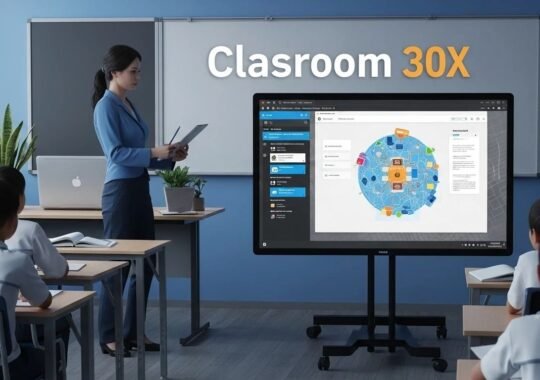Location-based marketing is changing how brands connect with people every day. It draws a direct link between where someone is and what they care about most. This idea opens doors for smarter and more meaningful customer reach.
Businesses are learning that timing and place can shape a stronger story. Each message becomes more relevant, and every connection feels more personal. It’s how marketing meets real moments in motion.
In this blog, we will discuss how location-based tools help target audiences effectively. Keep reading.
How Location Data Transforms Audience Targeting Strategies
Location data gives brands the insight to understand who their audience is and where they are. It allows marketers to see real patterns of behavior rather than guesses. This kind of awareness makes every campaign more focused and effective.
Through geo-targeted advertising, brands can connect with people who are most likely to respond. It narrows down audiences into real groups based on their daily paths. This focus helps create messages that match a person’s lifestyle or needs.
Mobile audience targeting uses the same logic but adds more detail. It helps brands adjust their reach as people move through different areas. When used well, location data builds stronger engagement and keeps attention where it matters most.
Boosting Engagement with Real-Time Location Insights
Real-time insights show marketers how customers move and make choices throughout the day. These insights help businesses craft messages that match the moment. The faster brands react, the more natural and connected their outreach feels.
When brands use location intelligence, their campaigns stay in tune with what’s happening now. This leads to responses that feel instant and relevant. People notice brands that speak to them at the right time and place.
It’s not about sending more messages but sending smarter ones. Real-time data helps shape this balance. The outcome is a steady rise in engagement that feels earned, not forced.
Using Geofencing to Deliver Hyperlocal Campaigns
Geofencing allows businesses to draw virtual boundaries around real locations. When someone enters or leaves those areas, a message or alert can appear on their device. This gives marketers a tool to create locally aware campaigns that feel personal and timely.
With geofencing, brands can deliver messages that match the setting, like reaching shoppers near a store or visitors at an event. This adds depth to marketing that feels direct and useful. It also helps companies reduce waste by focusing on people within defined zones.
According to experts in geofencing, this method enhances how businesses connect with local audiences. It lets campaigns focus on the right place, at the right moment. Each message becomes a small bridge between digital reach and physical presence.
The Power of Beacon Technology in Customer Connection
Beacons are small devices that send signals to nearby phones. They help brands engage customers who are already close to a store or event. This creates a link between physical space and digital communication.
Using beacons, marketers can share reminders, special offers, or updates. The message feels natural because it’s tied to a person’s location. It’s a modern way to bring technology closer to real-life activity.
This kind of direct connection builds familiarity. Customers start to expect meaningful updates that improve their experience. Over time, beacon use turns a quick message into long-term brand trust.
Enhancing Marketing Precision Through Location Intelligence
Location intelligence helps marketers make decisions with clarity and purpose. It uses patterns from maps, visits, and real-time movement to form useful insights. These insights give campaigns a sharper aim.
Precision in marketing depends on understanding how and where customers act. With location data, businesses can remove guesswork from their plans. This makes every outreach more focused and cost-efficient.
As brands adapt to this technology, marketing becomes smarter and cleaner. Campaigns stop feeling broad and start feeling intentional. Each interaction feels like it was designed for a specific audience, not a crowd.
Improving Campaign Reach with Mobile Location Analytics
Mobile location analytics lets businesses see how people move through spaces and respond to messages. This kind of data shapes strategies that are grounded in real-world behavior. It gives context to customer habits and routines.
When combined with geo-targeted advertising, campaigns reach the right audience more often. It ensures each message travels to a location where it matters. The reach grows stronger, not wider, making efforts more meaningful.
Brands that understand movement patterns can spot where engagement naturally happens. They use this insight to expand visibility at key touchpoints. Over time, their campaigns feel more natural and less intrusive.
Personalizing Ads Based on Customer Movement Patterns
Customer movement tells a story about habits, timing, and interests. By studying these paths, marketers can tailor messages that match daily life. This approach helps create ads that feel personal rather than random.
Mobile audience targeting uses this data to fine-tune delivery. It ensures that content shows up when it fits best in someone’s day. The experience becomes smoother and more relevant to the user.
Personalized campaigns show that a brand pays attention. This small detail builds loyalty and trust over time. It’s not just data use-it’s understanding people’s real routines and responding with care.
Leveraging GPS Data for Smarter Brand Interactions
The GPS data gives businesses a broader view of how customers travel and engage. It helps spot where and when people interact with their surroundings. This information supports campaigns that match real-world behavior.
Brands use this data to plan stronger routes for outreach. They can locate high-activity zones or times when customers are most receptive. This makes every message a better fit for its moment.
By pairing GPS data with location intelligence, marketers build precision and timing. The approach feels natural and not forced. Over time, this leads to steady growth in both visibility and response.
The Future of Connection Lies in Location-Based Marketing
Location-based marketing shapes how brands connect in real time with people who matter most. It blends place, timing, and intent to make every message feel genuine and well-placed. This approach keeps marketing grounded in real movement, not just data.
As businesses adapt, their outreach becomes sharper and more personal. Each campaign reaches people when it counts most. Explore how this strategy can move your brand closer to real impact.
Did you find this article helpful? Explore our other blog posts for more insights.





